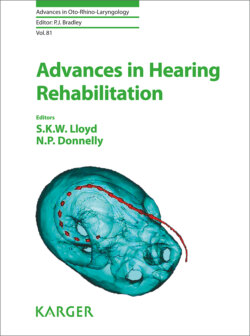Читать книгу Advances in Hearing Rehabilitation - Группа авторов - Страница 15
На сайте Литреса книга снята с продажи.
Clinical Utility
ОглавлениеNon-EPI DWI MRI examination is a very reliable technique to detect cholesteatoma (Fig. 3). There is accumulating evidence that it can replace second-look surgery in the detection of recurrent or residual cholesteatoma, and can therefore save many patients unnecessary exploratory surgery. The major limitation of the technique is its inability to depict cholesteatoma smaller than 2 mm. It also lacks anatomical information and precise localization of cholesteatoma is not possible on these images. This can be solved by “matching” and “superposition” or “fusion” of the CT and MRI images (Fig. 3, 4).
Fig. 3. Coronal B-1000 non-EPI DWI image (a), axial CBCT image (b), intraoperative view (c): White arrows show a small cholesteatoma in a small aerated and opacified cell in the petrous apex, located deep in the SCC. Without surgical-radiological correlation it would have been impossible to find this lesion.
